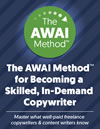Use Statistics in Sales Copy But Do it This Way to Add Credibility
to Your Message

Born to a rather large working-class family, Joseph Jacques Jean Chrétien was the 18th sibling out of a total of 19 children.
Always interested in politics, even at a young age, he rose to fame as one of the country's leading politicians. And during the years of 1993-2003, he served as the 20th Prime Minister of Canada.
After retiring from politics, he joined the Dentons Law firm.
While Joseph never took up the art of copywriting, he certainly understood a fundamental element that all good copy contains: Proof.
In fact, one of my favorite quotes on proof is attributed to Joseph …
"A proof is a proof. What kind of proof? It's a proof. A proof is a proof. And when you have a good proof, it's because it's proven."
When it comes to writing winning copy, you need to provide your readers with enough proof that they believe every word you write. (Yes, that goes for content too!)
It's no different than what Joseph had to do to prove his case beyond a shadow of a doubt in front of a judge and jury. You have to do the same in front of your readers.
But it's how you use proof that matters.
I'll show what I mean with this quick example …
Let's talk about hamburgers. You probably already know; that they are one of the world's most favorite foods. They've been around for years but it wasn't until McDonald's opened in San Bernardino California that made them extremely popular.
And McDonald's fast-food restaurants were popping up all over the country.
But here's something you might not know. It takes an awful lot of water to make a single hamburger.
I'm going to tell you the answer but I'm going to do so by using a statistic as proof.
So just how much water does it take to make a hamburger?
According to the College of Charleston's Environmental Studies Department, a typical 1/3-pound hamburger requires 660 gallons of water. But that's not all. The department also found that it takes 1,799 gallons of water to produce one pound of beef.
Notice that when I mentioned these statistics, I also shared the resource where I found them. Why do this?
It makes the proof point more credible. And the more credible your copy, the higher the chances your prospect will hit the buy button.
This probably isn't proof McDonald's would use … that's a lot of water per burger … but it might be a stat a pizza chain or chicken joint might play up. (Eat pizza … save water!) 😁
The important thing to keep in mind is to provide enough backup to your claims so your copy is credible … that you're soothing your readers' unspoken anxieties and objections.
The best way to remove those doubts is backing up your claims with proof.
But something else happens too when you take the time to do research to find those proof points or statistics: You're actually building a relationship with your reader. A relationship that will eventually show up as a sale.
Whether you're writing content or sales letters, or anything in between, the ultimate goal is a sale.
And the more sales you help generate for your client, the more money you stand to make. And the closer you get to becoming a sought-after copywriter.
One other tip about using statistics … avoid simply listing out a bunch of them. That can easily overwhelm your reader. Instead, add context that gives each one meaning.

The AWAI Method™ for Becoming a Skilled, In-Demand Copywriter
The AWAI Method™ combines the most up-to-date strategies, insights, and teaching methods with the tried-and-true copywriting fundamentals so you can take on ANY project — not just sales letters. Learn More »
Guest, Add a Comment
Please Note: Your comments will be seen by all visitors.